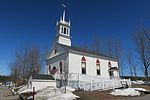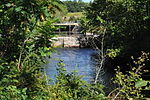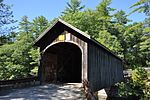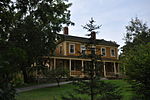Little Falls-South Windham, Maine
Gorham, MainePortland metropolitan area, MaineWindham, Maine
Little Falls-South Windham was a census-designated place (CDP) in Cumberland County, Maine, United States defined for the 2000 census. The population of the CDP was 1,792 at the time. Because of new CDP guidelines for 2010, the CDP has been split into two CDPs: Little Falls and South Windham. It is part of the Portland–South Portland–Biddeford, Maine Metropolitan Statistical Area.
Excerpt from the Wikipedia article Little Falls-South Windham, Maine (License: CC BY-SA 3.0, Authors).Little Falls-South Windham, Maine
Paul Avenue,
Geographical coordinates (GPS) Address Nearby Places Show on map
Geographical coordinates (GPS)
| Latitude | Longitude |
|---|---|
| N 43.731666666667 ° | E -70.420277777778 ° |
Address
Paul Avenue 6
04062
Maine, United States
Open on Google Maps








